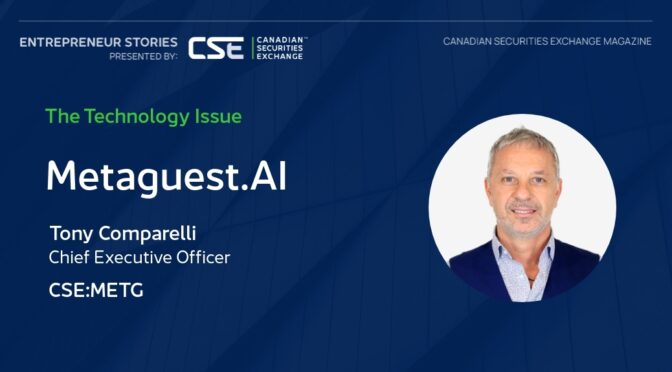It depends on whom you ask, but healthcare in most countries feels, if not broken, then at the very least in critical condition. In Canada, the U.S., the U.K., and beyond, our medical ecosystems are strained by bureaucracy, old ways of working, inflation, workforce shortages, and ageing patient populations.
The promise of technology and artificial intelligence has loomed for years as a potential remedy. Social distancing measures imposed during the COVID-19 pandemic acted as a catalyst, accelerating the adoption of digital tools to keep patients out of emergency rooms.
There have been meaningful advances before and since, from virtual triage to AI-powered symptom checkers, but doctors and healthcare organizations remain hungry for tools that save time and resources.
Treatment.com AI (CSE:TRUE) is an emerging Canadian company that has developed an AI platform to do just this, and its scope is nothing if not impressive.
The Vancouver-based team believes it has built one of the most robust, clinically grounded diagnostic AI tools on the market, with clinically validated content and proprietary algorithms being the platform’s key differentiators.
Fuelling the company’s diagnostic engine is what Treatment.com AI calls the Global Library of Medicine (GLM), which was built over the course of more than seven years, drawing on more than 40,000 hours of clinical expertise and input from hundreds of doctors globally.
This means that unlike generic large language models (LLMs), which scrape unverified information from the internet, the Treatment.com AI engine is designed to minimize bias, making it a more reliable and adaptive tool for healthcare.
“The GLM has the ability to ‘think like a doctor’ and diagnose and ask questions in the most logical and necessary way regarding more than 1,000 diseases among the most common ones you’d see in a clinic or a hospital,” says Treatment.com AI Chief Executive Officer Dr. Essam Hamza, a family doctor turned technology entrepreneur who joined the company in late 2023. Hamza adds that the GLM knowledge base encompasses “over 15,000 symptoms and risk factors.”
One application of the platform that the company believes will be attractive for clinics and hospitals is an AI assistant (either through voice or text) that takes calls from patients and guides them through a structured diagnostic conversation. Triaging symptoms, suggesting assessments, and assisting with diagnosis are all parts of the process, as well as signalling possible red flags early. It can take a medical note and, where necessary, communicate with electronic medical record systems.
The GLM is designed to complement, rather than replace, healthcare professionals. It does not issue its diagnosis to the patient but rather conveys the information to a licensed practitioner, which makes follow-up quicker and minimizes risk and associated potential liability as compared to a consumer-facing-only product.
Interestingly, Hamza originally got to know the company as an investor. “I really loved the technology, but the commercial side was missing, and I could see the potential,” he explains.
Under his lead, Treatment.com AI has moved away from its early direct-to-consumer model and is now focused on embedding its technology in hospitals, health systems, and insurers in more of a “B2B2C” model.
Other changes included adding Chief Financial Officer David Worner, who brings technology industry and M&A experience, and Chief Operating Officer Richard Atkins, who spearheaded sales for CloudMD and before that was at Health Navigator, which Amazon acquired to launch Amazon Care.
Even with these enhancements, Hamza acknowledges that Treatment.com AI is not the only entity betting that AI can help solve inefficiencies in the global healthcare ecosystem. He is thus making acquisitions to provide proof that the company’s AI performs in the real world and also to broaden the company’s commercial footprint.
The first addition, announced in January of this year, was Alea Health, which has a proprietary online therapy platform that leverages AI-driven tools to address mental health challenges. The platform incorporates conversational AI and voice technology to optimize patient intake and follow-up processes, thereby reducing administrative burdens and enhancing patient engagement. The technology and skills within the team will be utilized across the Treatment.com AI group.
The latest addition to Treatment.com AI, coming aboard in April, is Rocket Doctor, a fast-growing platform for patients to access care and MDs to launch their own practices largely virtually, now with hybridized in-person models across North America.
Founded by Toronto-based emergency physician Dr. William Cherniak, Rocket Doctor has helped empower over 300 MDs to provide care to over 600,000 patient visits across North America. Cherniak calls it a “Shopify for doctors” and says it caters to both urban and underserved rural patients in Canada and the U.S.
“We’re not just a virtual walk-in clinic,” says Cherniak. “We’re leveraging the most advanced technology to empower physicians to practice independently, integrating family medicine, primary, specialty, as well as urgent care, keeping hundreds of thousands of people out of hospital.”
For Hamza, Rocket Doctor was both a strategic fit and one generating revenue. “We’re treating Rocket Doctor almost as a customer. It’s a proof of concept for our AI,” Hamza says. “It allows us to optimize performance at scale and also help improve the bottom line.”
It also aligns with Treatment.com AI’s commercial approach. “We don’t go door to door to sell to individual doctors,” says Hamza. “We’re at the point now where we’re ready and looking to sign contracts with healthcare organizations, insurers – anyone with thousands of doctors or millions of patients. Having built a robust cloud-based solution and graduating as one of only two Canadian start-ups in Google’s Inaugural AI First Accelerator, Rocket Doctor has the infrastructure and customer base that can use our AI technology and show it works.”
Rocket Doctor has contracts with individual physicians and hospitals across Canada, as well as in California, New York, and Maryland, working with managed care plans and independent physician associations. In January, it executed a contract to go in-network with a 450,000-member managed care plan of Medicaid in California. In March, it was awarded a new clinical contract with its partner EngageWell IPA for a US$1 million five-year CVS Health Foundation grant, providing care to seniors for cardiovascular, cognitive, and mental health.
“Rocket Doctor is not just for proof of concept. I like them as a company, and they’re growing well independently and have a great brand,” says Hamza. “We’re not changing that platform at all. We’re going to add fuel to the fire of that growth, make some introductions to improve the top line, and use our technology to try and help the bottom line too.”
Treatment.com AI is also building out a suite of complementary products using its core AI engine. These include a pharmacy triage system and a medical education tool, which is already in use at the University of Minnesota.
“We’re not a tech roll-up,” Hamza says. “We’ll only acquire companies that truly complement our strategy. If we buy something, it’s because we believe it adds a critical piece we don’t already have.”
Rocket Doctor is rapidly growing meaningful software as a service (SaaS) revenue, with gross margins near the high end of the 80% range, according to Hamza, who notes a path to doubling revenue in the first year, building on its 88% year-on-year increase in 2024. Revenue recognition for Treatment.com AI from the Rocket Doctor subsidiary is expected to begin in the second quarter, ending August 31.
“We’re moving like we’re a $100 million Annual Recurring Review (ARR) company and growing rapidly into those clothes,” he says.
If Treatment.com AI can continue its progress and keep turning clinical credibility into commercial contracts, the company will deliver on its mission to improve access for patients, reduce administrative overhead for healthcare professionals, and enable providers to deliver more efficient and profitable healthcare systems.
This story was featured in Canadian Securities Exchange Magazine.
Learn more about Treatment.com AI at https://www.treatment.com/.










